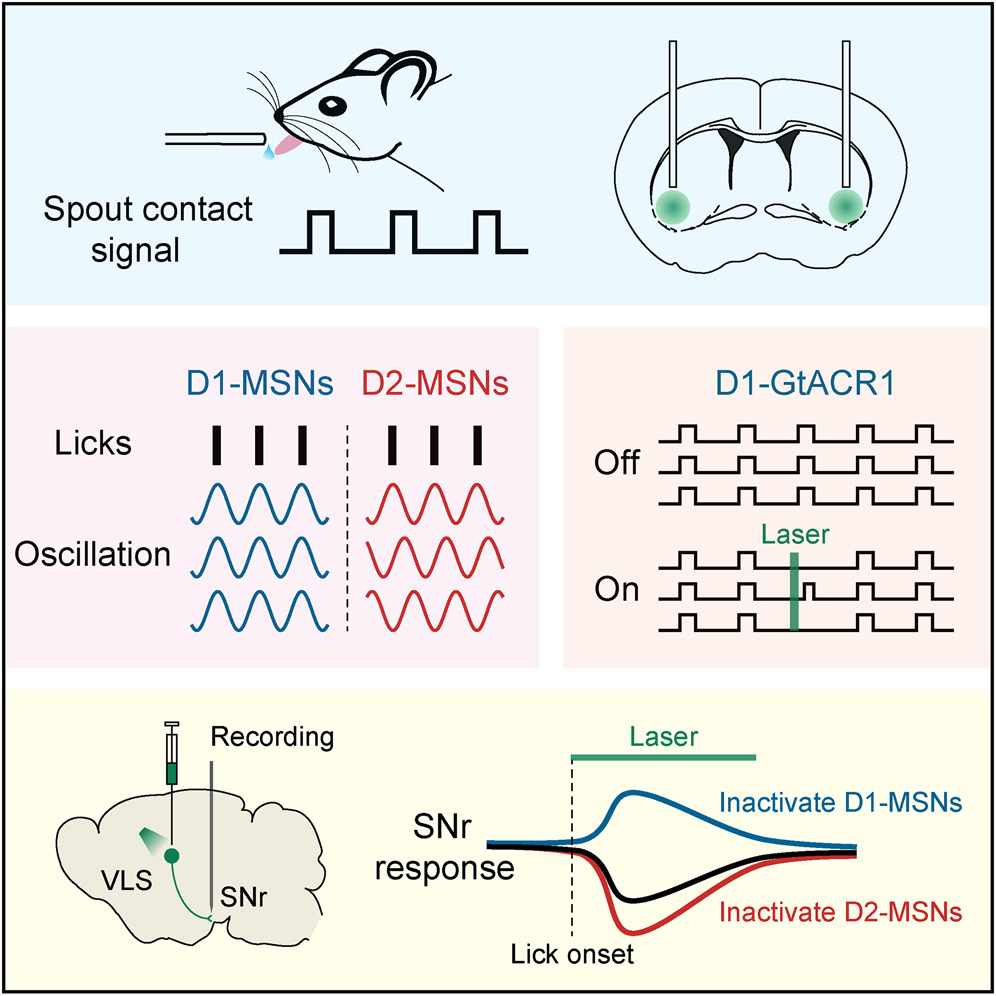
Researchers led by Dr. YAO Haishan from the Center for Excellence in Brain Science and Intelligence Technology of the Chinese Academy of Sciences have revealed that direct and indirect pathway striatal neurons exhibit temporally distinct activity patterns and differentially modulate basal ganglia output responses.
Their study was published in Cell Reports on Oct. 19, 2021.
The basal ganglia are critical for movement initiation and execution. The main input nucleus of the basal ganglia is the striatum, in which over 90% of neurons are GABAergic medium spiny neurons (MSNs). The outputs of the basal ganglia are GABAergic neurons in the substantia nigra pars reticulata (SNr) and internal globus pallidus (GPi).
Striatum MSNs are divided to two classes: the direct pathway MSNs express the D1-type dopamine receptors (D1-MSNs) and project directly to the output nuclei at SNr and GPi; the indirect pathway MSNs express the D2-type dopamine receptors (D2-MSNs) and project indirectly to the output nuclei via the external globus pallidus (GPe) and the subthalamic nucleus (STN), which are composed primarily of GABAergic and glutamatergic neurons, respectively.
Drinking behavior in rodents is characterized by stereotyped, rhythmic licking movement, which is regulated by the basal ganglia. It is unclear how direct and indirect pathways control the lick bout and individual lick event.
Licking behavior in rodent consists of rhythmic tongue movements at fine timescale and the ventrolateral striatum is important for tongue movements. The researchers used voluntary licking behavior in head-fixed mice to examine the response patterns of direct and indirect pathway striatal neurons at timescale of a lick cycle as well as a lick bout, and how striatal activities in the two pathways regulate the responses of SNr neurons during licking.
They found that, at timescale of a lick bout, inactivation of D1-MSNs reduced lick rate, whereas inactivation of D2-MSNs increased lick rate. Using optogenetic tagging, they found that D1- and D2-MSNs were both activated during licking movement, but had different activity during the initiation and execution of lick sequence.
At fine timescale, D1- and D2-MSNs displayed different phases of oscillation time-locked to the lick cycle, and the peak response of oscillatory activity in D1-MSNs was around the time of spout contact. Interestingly, transient inactivation of D1-MSNs during tongue protrusion reduced spout contact probability, whereas transiently inactivating D2-MSNs had no effect.
The researchers also found that inactivation of D1- and D2-MSNs led to distinct response changes in sub-populations of SNr neurons.
The study has revealed that D1- and D2-MSNs play distinct roles in regulating movement at both coarse and fine timescales, and that the endogenous activity of D1- and D2-MSNs oppositely regulate the responses of a subset of SNr neurons during movement.

Distinct roles of D1- and D2-MSNs in regulating licking movement and nigral responses (Image by CHEN Zhaorong)

86-10-68597521 (day)
86-10-68597289 (night)

86-10-68511095 (day)
86-10-68512458 (night)

cas_en@cas.cn

52 Sanlihe Rd., Xicheng District,
Beijing, China (100864)

